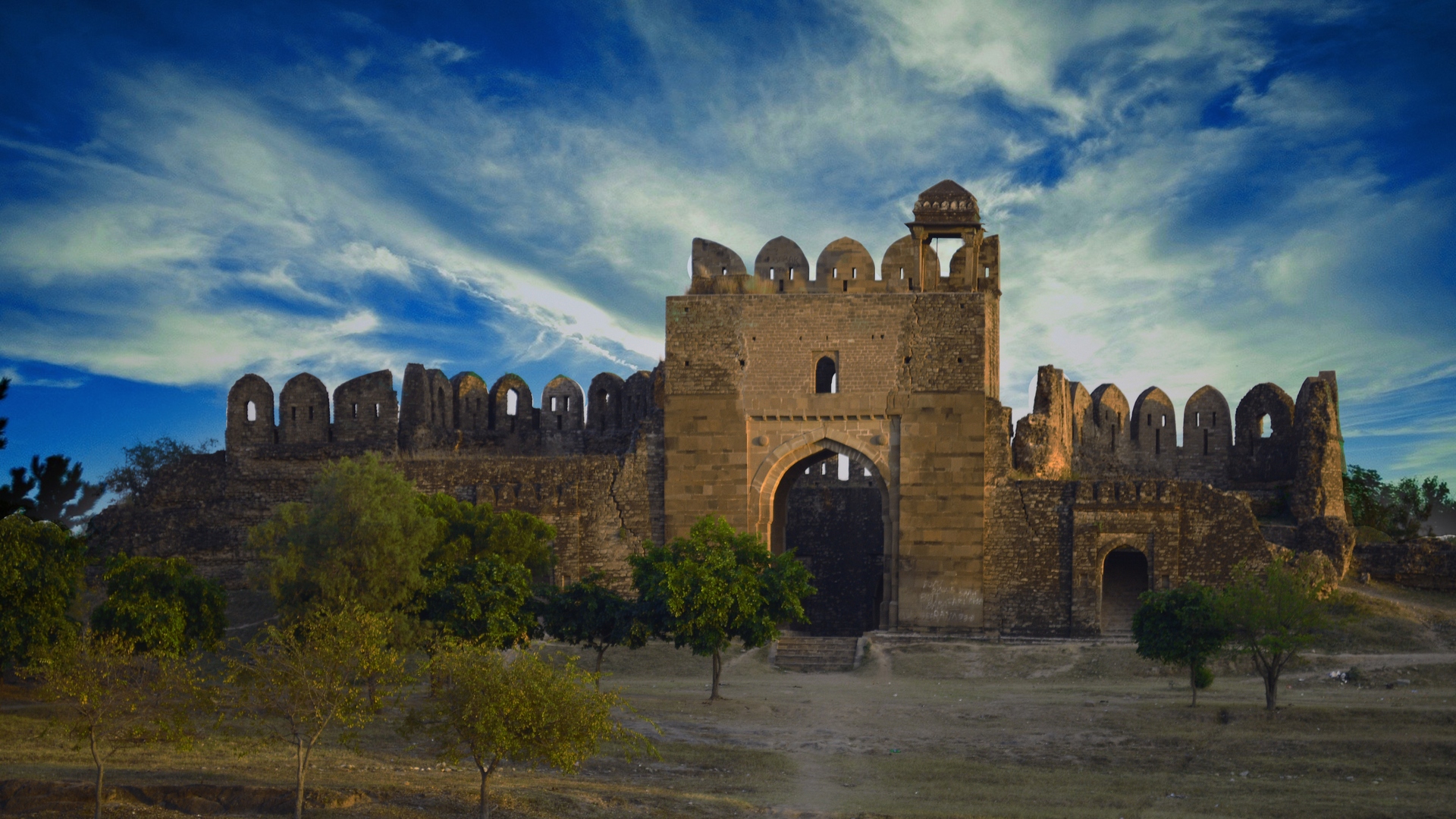Description
Property Name: Rohtas Fort
Inventory No: 92-541-1
Date of infill of the inventory form: 2008-02-14
Country (State party): Pakistan
Province: Jhelum
Town:
Geographic coordinates: 32° 57′ 45″ N
73° 35′ 20″ E
Historic Period: Mughal
Year of Construction: 1541-43
Style: Mughal
Original Use: Fortress
Current Use: Cultural
Architect: Unknown
Significance
The majestic Rohtas Fort, surpassing many other citadels in grandeur and massiveness, is the only example of architecture of the type belonging to the times of Sher Shah Suri. The monument represents a milestone in the history of fort architecture. The commanding situation of the fort, with its awesome huge walls and trap gates, makes it a unique piece of the cultural heritage.
Selection Criteria
ii. to exhibit an important interchange of human values, over a span of time or within a cultural area of the world, on developments in architecture or technology, monumental arts, town-planning or landscape design
iv. to be an outstanding example of a type of building, architectural or technological ensemble or landscape which illustrates (a) significant stage(s) in human history
State of Preservation
The main historic features of the Fort are authentic in form, setting, and materials. The limited restoration that has been carried out has been minimal and discreet, avoiding the use of inappropriate modern materials.
The Department of Archaeology has a Master Plan for the monument which provides for conservation work on the gateways facing the river, the merlons of the parapet walls, twelve of the bastions, and the internal dividing wall. It is an exceptional example of early Muslim military architecture in central and south Asia. There are no surviving examples on the subcontinent of military architecture of this period on the same scale and with the same degree of completeness and preservation. Inscribed by UNESCO as a World Heritage Site in 1997 for being an “exceptional example of the Muslim military architecture of Central and South Asia.” The Rohtas Fort Conservation Programme was initiated by the Archaeology and Museums department and the Himalayan Wildlife Foundation in 2000 to help protect the fort and develop it as a heritage site conforming to international standards of conservation and tourism. A steering committee created in 2003 oversees the conservation and development work. Open to visit.
References
Amin, Mohamed. Journey through Pakistan. Nairohi. Cameropix Publishers International, 1982.
Khan, Ahmad Nabi. Monuments of Islamic civilization in Islamic Republic of Pakistan. Rabat: ISESCO, 2000.
Mumtaz, Kamil Khan. Architecture in Pakistan. London: Concept Media Ltd.; North America: Butterworth Architecture.
Unesco Website: http://whc.unesco.org


